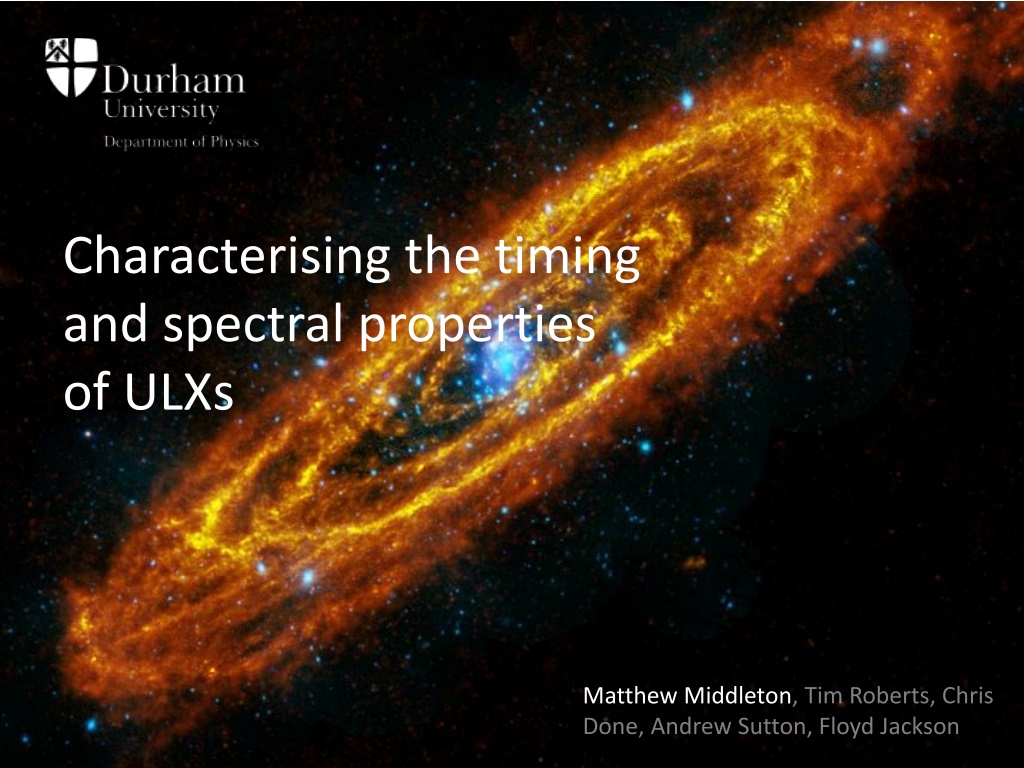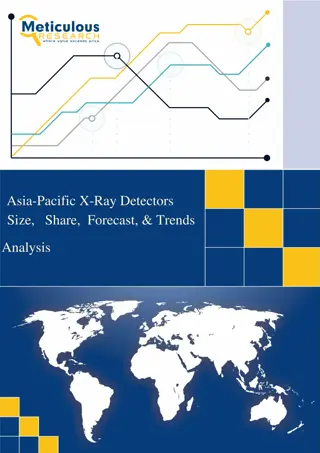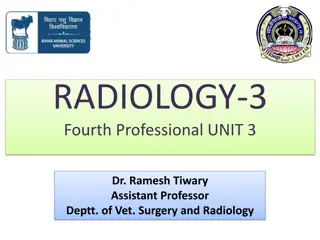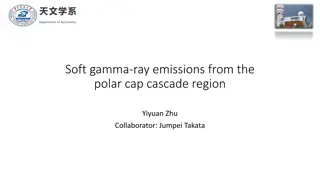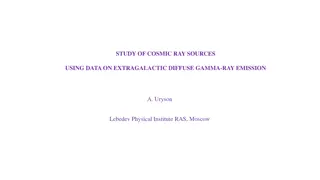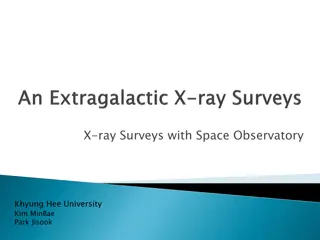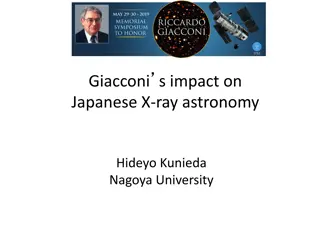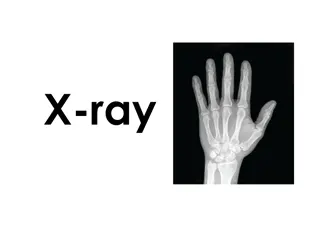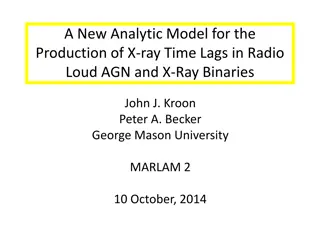Ultraluminous X-ray Sources (ULXs) Properties
Explore the timing and spectral properties of Ultraluminous X-ray Sources (ULXs) through research conducted by Middleton, Gladstone, Roberts, Done, Uttley, and others. Learn about the spectral shapes, spectral deconvolutions, variability in X-ray spectra, timing tools, classification into low and high luminosity ULXs, and discussions on Intermediate-Massive Black Holes (IMBHs) arguments. Discover how to discriminate using co-properties and distinguish between low, medium, and high-energy ULXs.
Download Presentation

Please find below an Image/Link to download the presentation.
The content on the website is provided AS IS for your information and personal use only. It may not be sold, licensed, or shared on other websites without obtaining consent from the author.If you encounter any issues during the download, it is possible that the publisher has removed the file from their server.
You are allowed to download the files provided on this website for personal or commercial use, subject to the condition that they are used lawfully. All files are the property of their respective owners.
The content on the website is provided AS IS for your information and personal use only. It may not be sold, licensed, or shared on other websites without obtaining consent from the author.
E N D
Presentation Transcript
Characterising the timing and spectral properties of ULXs Matthew Middleton
Wide range of ULX spectral shapes Gladstone, Roberts & Done 2009
Spectral deconvolutions are sometimes degenerate!
Need to discriminate using co-properties L/Ledd X-ray spectra Variability < a few % Hard tail, cold disc Tail highly variable (disc the source of variability: Uttley et al. 2011) A few tens % Hotter disc with softer tail (<2.2) Stable disc, tail can have residual variability ~tens % Disc dominated Stable on all but very long timescales 100% Advection? Winds? Extrinsic?
Timing tools: Fourier transform the lightcurve power density spectrum (PDS) Excess variance (rms) spectrum break the lightcurve into different energy bands subtract white noise Covariance measure correlated variability relative to a reference band. Lag spectra (see Phil Uttley s talk Thursday 17:50) For a single observation measuring its spectral shape and variability is useful but seeing the evolution of spectral shape and variability is powerful. ULXs are generally persistant!
Treat ULXs as two populations, low luminosity and high luminosity Low luminosity ULXs appear spectrally broad High luminosity have clear breaks Gladstone, Roberts & Done 2009
Example 1. M33 X-8 Weng et al. 2009
LOW MEDIUM HIGH Low : < 1.36x1039 erg/s Medium : 1.36-1.52x1039 erg/s High : > 1.52x1039 erg/s
IMBH argument: 100-10,000 solar masses In high bin, this would be at < 10% L/Ledd Prediction: hard tail and highly variable (low state), or soft power-law tail out to >50keV (very high state). Spectra inconsistent + no variability above 3keV Disc only spectra (e.g. thermal dominant) do not fit and even relativistically smeared spectra are not broad enough: Middleton, Sutton & Roberts 2011
If mass of M33 X-8 is ~10Msolar then mass accretion rate approaching or at Eddington in even the lowest bin Predictions above Eddington: 1. Slim disc (Mineshige 2000): disc becomes thermally inefficient, dominated by advection processes Tin Rin-p for a thin disc p = 0.75, advection dominated p=0.5 2. Winds(Poutanen et al. 2007): Radiation pressure drives material from the disc - spectrum becomes distorted
Slim disc only: Low Tin = 1.90 +/- 0.1 Tin = 1.43 +/- 0.05 P = 0.52 +/- 0.01 p = 0.56 +/- 0.01 Medium Luminosity has increased therefore mass accretion has increased but T has decreased. p has increased and so disc appears to be LESS advection dominated! Inconsistent with advection dominated disc behaviour seen in other ULXs (Feng & Kaaret 2007). Energy must be being lost somehow include the effects of wind creation...
Toy model: R2 R1 ISCO Middleton, Sutton & Roberts 2011 Advection dominated disc cool component Inner regions highly illuminated, disc loses energy in a photosphere/wind hot component As luminosity increases, radiation pressure increases, R2 moves outwards. Disc component gets cooler and less advection dominated.
Fit significantly improved in all bins. Middleton, Sutton & Roberts 2011 Consistency check, does our choice of bin affect the outcome? No (actually constrains it further) plus all individual observations are well described by their flux binned spectral model.
Just disc spectrum, mass of ~20 solar masses? Try BHSPEC across all simultaneously ensures T4 behaviour. Only good description if we use the smaller estimate of nH (0.067 rather than 0.127x1022cm-2)
Smaller mass: ULX model better fit for either of the two columns With decreasing luminosity the disc gets hotter and more advection dominated, the wind component gets hotter and less important Middleton et al. 2011 in prep
Fractional covariance: excess rms in a given energy band relative to a reference band, normalised to the mean count rate in each. Middleton et al. 2011 in prep
No correlated variability: how to make this in just a disc? Instability at ~Eddington that propagates inwards with dampening at all other radii? Contrived? R2 R1 ISCO Variability at the edge of the cool disc is a possibility if the expelled wind/photosphere is strong enough and intercepts the disc in the line-of-sight? Consistent with X-ray spectral models.
Higher luminosity ULXs? NGC 5408 X-1 (seeDheerajPasham s talk next)
Middleton et al. 2011 Variability increases on all timescales second component highly variable but does not look like sub-Eddington component......extrinsic? Also seen in other sources: see Andrew Sutton s poster
R2 R1 Increasing mass accretion rate ISCO R2 R1 Possible degeneracy in model via viewing angle.
SUMMARY Low luminosity ULXs are broad can make spectral fitting difficult We can use timing tools to strengthen our models M33 X-8 appears to behave as an Eddington/Super-Eddington system with advection and wind effects important M31 ULX-1 shows a linear decrease consistent with e-fold times of soft outburst sources Spectral behavior matches our predictions as does the variability Toy model might change at higher luminosities or be degenerate in viewing angle
